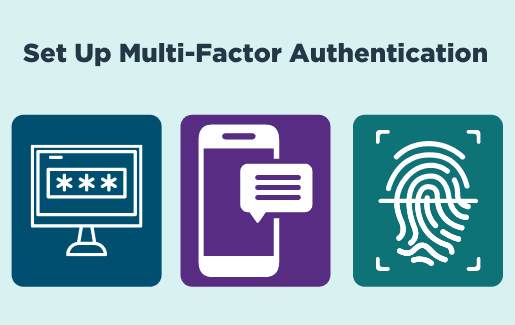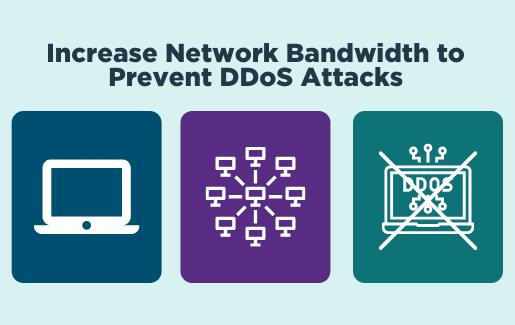Many people nowadays work in industries that largely rely on cloud computing to stay on top of their daily tasks. Moreover, the system allows people to seamlessly integrate as many employees as needed into any project. Even so, cloud security has some pretty major flaws. It’s vulnerable to configuration errors, malware, insider threats, data breaches and even account hijacking.
If Facebook and Yahoo were unable to protect themselves against cloud security threats, do other companies even stand a chance? The truth is, people can never be sure they won’t fall prey to cyberattacks. Still, the best everyone can do is make sure they’re ready for any development. Luckily, there are plenty of ways to mitigate the risks mentioned by implementing certain cloud computing practices.
As established, cloud computing has many potential vulnerabilities others can exploit. But since the system has already been around for a few decades, there are also plenty of solutions to those problems. At this point, many of these things are necessities.
Here’s how you can mitigate cloud security threats and protect company data:
Limit user access to cloud security
If multiple users can access a company’s cloud storage, the first thing someone should do is introduce levels of clearance. One way to do that would be to give all employees of a certain rank a single password that allows them to access the information they need.
However, if someone wants to be even more diligent, they can give each employee a special password and a unique identifier. That would allow someone to discover threats and vulnerabilities within the company’s structure.
Set up multifactor authentication
Most cloud computing platforms that require a password will automatically rate the complexity of the user’s code as they log in. Passwords need to consist of uppercase and lowercase letters as well as numbers and sometimes even symbols. But if someone wants to make the company accounts even more difficult to break into, they can also implement two-step authentication.

Usually, that means the users will also receive a time-sensitive code to their phones or email addresses as an additional precaution. However, people could replace that with a physical key in the form of a USB drive that needs to be inserted into the computer when a user is trying to log in. Those are only two examples of what a safer log-in process could look like.
Regularly back up company data
Backing up cloud data is the best way to protect businesses against configuration errors and malware that might compromise or erase it. Many companies and individuals have experienced the devastating effects of losing their projects through that kind of negligence.
Even Disney has had to deal with that. Due to a clerical error, Toy Story 2 was erased during production. The movie wasn’t necessarily on cloud storage, but this story still illustrates the point. At that time, the company was saved from having to waste a year picking up the pieces because an employee had the film on her personal computer while she was working from home.
Needless to say, we can’t leave these things up to chance. Besides, most companies can’t afford to have their confidential information on their employees’ home PCs. Instead, it’s important to set up automatic backup and recovery on separate servers. On top of that, a company could also keep some backups stored on physical drives, which would be safe in case online servers fail.
Hire cybersecurity experts
Most companies employ information technology (IT) experts to set up and maintain their computers. That alone may be enough to keep tech free of malware. But whether someone keeps an IT team on staff or outsources the task, they might want to make sure the people they’re working with have all the relevant cloud computing certifications needed to keep the data secure.

Employees that are trained in recognizing cybersecurity risks and implementing appropriate safety measures will be able to:
-
Regularly audit the cloud service a business is using to store its data
-
Implement an access management framework to restrict access to certain information
-
Change all employee passwords every month or so
-
Fix any errors that might come up due to cloud misconfiguration
-
Minimize and manage data leaks by encrypting the files
-
Back up the company data without disrupting the normal course of business
-
Move the data to another server if necessary
Ultimately, hiring people who are equipped to handle cloud security threats is the best way to mitigate those risks. Aside from that, the only other thing someone could do is make sure their employees understand the security precautions the company is taking.
Conduct employee training workshops on cloud security
Most successful companies know that employee training is the only way to keep everyone on the same page about company policies. And as established, cloud security is a topic most employees could stand to learn more about. Above all else, they need to be able to work on the platform a business is using. Many mistakes are preventable if people take the time to familiarize themselves with the system they’ll be working in.
Training can also teach employees about the dangers that are associated with cloud computing, as well as the safety practices the company has implemented. Consequently, employees will know how to stay protected against account hijacking, avoid malware and avoid configuration errors.
Moreover, learning about these things can help employees stay on guard even when it comes to insider threats. If they’re aware of behaviors that might compromise the company’s data, they’ll be able to recognize them if they see them happening in the office.
Increase network bandwidth to prevent DDoS attacks
Distributed denial of service (DDoS) attacks are still the most common risk associated with cloud computing. At some point, someone might try to block access to a company’s cloud computing platform by flooding it with connection requests from false accounts. That can effectively prevent a company’s staff from accessing the data they need to work. Luckily, the solution is fairly simple.

Someone just needs to increase the company’s network bandwidth, allowing it to withstand the rush of requests. Of course, depending on the scale of the attack, that may not be possible. With that in mind, businesses can also benefit from having a backup internet connection. If all else fails, that would let users connect to the cloud through different IP addresses.
With any luck, the tips mentioned here should keep a company’s information safe while everyone is working.
Do you have experience and expertise with the topics mentioned in this article? You should consider contributing content to our CFE Media editorial team and getting the recognition you and your company deserve. Click here to start this process.








